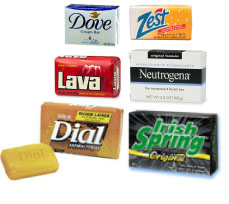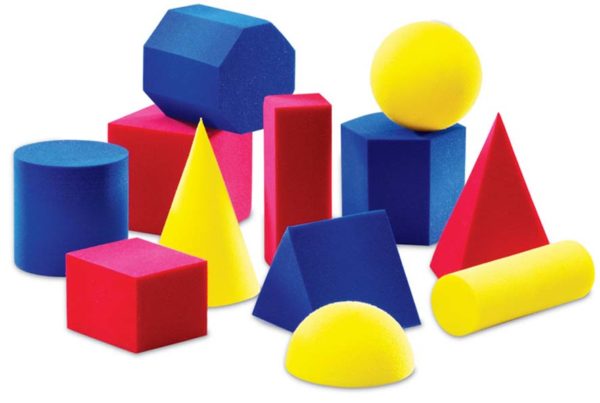We usually think of soap as being a very mild substance that is good for the skin. But, the cleansing effect of soap is due, in part, to the fact that it is a basic substance. Some soaps can dry out the skin, or even damage skin with frequent use.
When you teach your children about acids and bases and the pH scale, have them explore the pH of different soaps in your house. Test bath soap, dish soap, clothes soap, shampoos, facial cleansers, etc. They can also test household cleaners you may use, especially those that contain ammonia. But be sure these harsher products are tested under adult supervision since ammonia products can be harmful if they get in the eyes or are swallowed.
The easiest way to test pH is with pH test strips. You can buy these anywhere swimming pool or pond chemicals are sold, but they are usually fairly expensive. Unless you want them right away, you can order universal pH paper strips here for a very reasonable price. The shipping is a flat rate so you might want to join with other homeschool families to put in one order together, or look around for other science supplies you might need in the future.
For thick liquid soaps, powders, or bar soap, mix with a little distilled water so that the test strips can absorb the chemicals. All pH test strip packages come with a color key that can be used to determine the pH. Very often the color of the test strip will be in between two colors on the key. Use this as an opportunity to teach your children about estimating between two known values.
After you have results, remind children that a pH of 7 is “neutral” and completely harmless. The farther away from 7, the more harsh, and potentially harmful the base. Discuss the relationship between the pH of different types of soaps and their intended use. Why is there such a difference between bath soap and household cleaners? Also, check to see if any of the products advertise themselves to be “pH balanced.” Based on the pH test results, what does that mean? Do those products have a different pH from other similar products that don’t make that claim? Finally, you can extend the results with a consumer finance application. Do you find a difference in the pH of similar products from different brands? For example, is there a difference between the pH of a name brand bath soap and a cheaper store brand?
One final word about using test strips. A universal test strip tests a wide range of pH values and so will have less of a color change between similar pH values. A more narrow range test strip will show a bigger color range between similar pH values, but will show no results outside of the range of the pH paper. So, if you buy narrow range test strips, be sure they are within the range you want to test. For example, if you are testing soaps you will need to use pH test strips that test for a pH range above 7. Acid test strips (that test below 7) will give no results when testing soaps.




